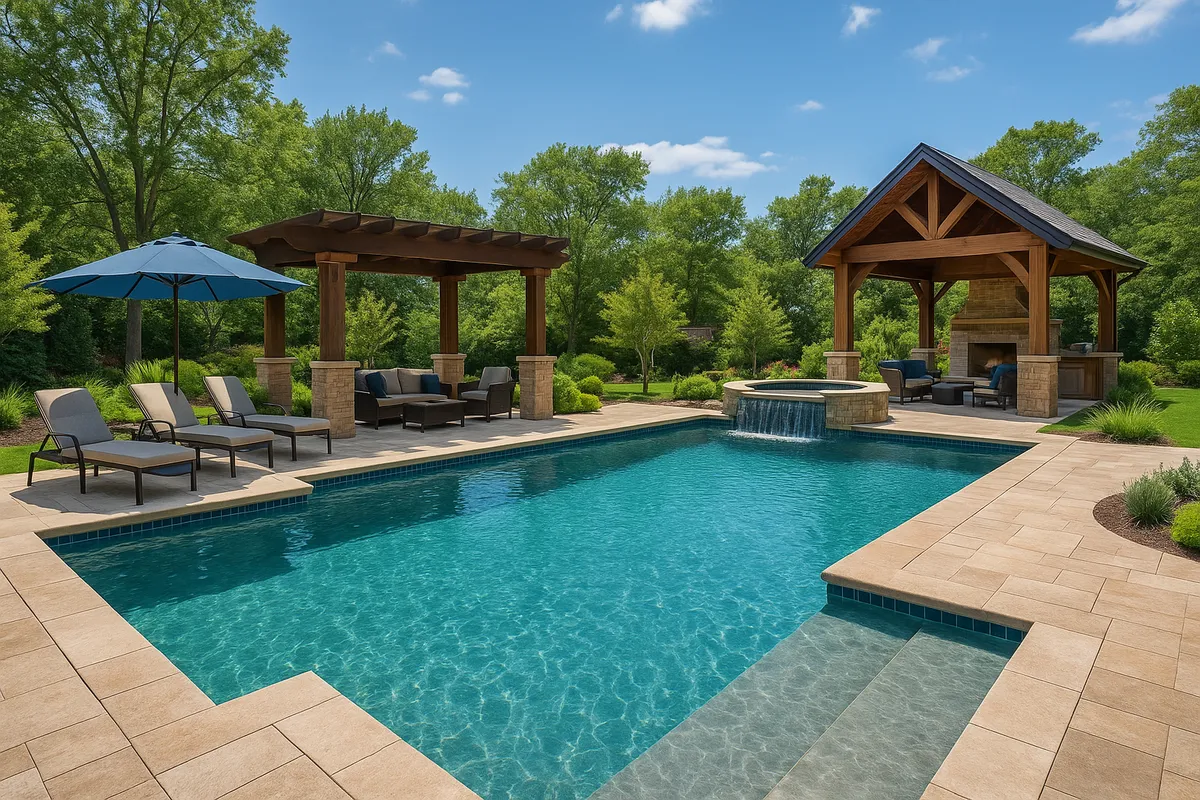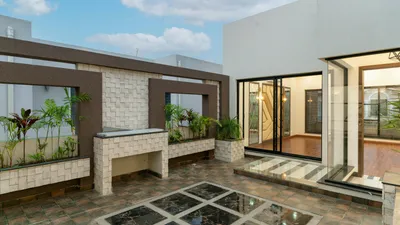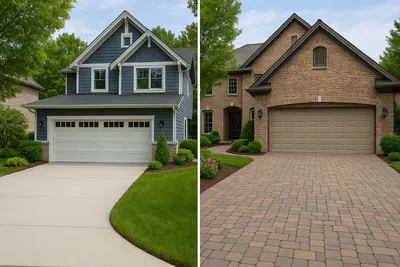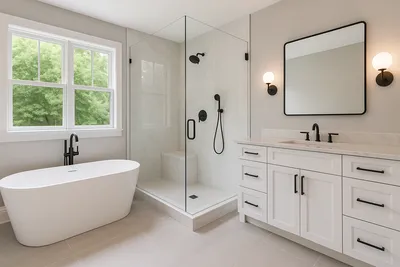Planning a new pool requires careful consideration of design, safety, budget, and maintenance. Our comprehensive guide helps you make informed decisions for your perfect backyard oasis.
Introduction: Creating Your Perfect Pool
Installing a swimming pool is one of the most significant investments you can make in your outdoor living space. A well-designed pool not only provides years of enjoyment for your family but can also increase your home's value by 5-8%. However, the key to a successful pool project lies in careful planning and consideration of numerous factors before construction begins.
From design and placement to safety features and long-term maintenance, every decision you make during the planning phase will impact your enjoyment and satisfaction with your pool for decades to come. This comprehensive guide covers the essential considerations to help you create the perfect pool for your lifestyle, budget, and property.
Pool Types and Design Options
Understanding the different types of pools available is the first step in planning your project. Each type offers unique advantages and considerations.
In-Ground Pool Types
- Concrete/Gunite Pools: Completely customizable shape and size, highest durability, premium option
- Fiberglass Pools: Quick installation, smooth surface, limited shape options
- Vinyl Liner Pools: Most affordable option, liner replacement needed every 8-12 years
Popular Pool Shapes and Styles
- Rectangular: Classic, ideal for swimming laps, fits most yard layouts
- Kidney-shaped: Organic curves, good for entertaining areas
- Freeform: Natural appearance, flexible design options
- Geometric: Modern aesthetic, clean lines, architectural appeal
- Infinity/Vanishing edge: Dramatic visual effect, ideal for sloped lots
Size and Placement Considerations
The size and location of your pool will significantly impact both construction costs and your long-term enjoyment of the space.
Determining Pool Size
- Yard proportion: Pool should complement, not overwhelm your landscape
- Intended use: Swimming laps requires length, entertainment needs wider areas
- User demographics: Consider ages and swimming abilities of regular users
- Budget constraints: Larger pools cost significantly more to build and maintain
Optimal Pool Placement
- Sun exposure: 6+ hours of direct sunlight for natural heating
- Wind protection: Reduce debris and heat loss from prevailing winds
- Privacy considerations: Position away from neighbors' direct view
- Access from house: Easy indoor-outdoor flow enhances usability
- Utility access: Consider electrical, plumbing, and gas line requirements
Safety Features and Requirements
Pool safety is not just a legal requirement in many areas—it's a critical consideration for protecting your family and guests. Modern safety features can be seamlessly integrated into attractive pool designs.
Required Safety Features (varies by location)
- Pool fencing: Self-closing, self-latching gates with appropriate height
- Pool covers: Safety covers that support weight and prevent access
- Pool alarms: Motion detection systems for water surface disturbances
- Door alarms: Alert when doors leading to pool area are opened
Additional Safety Considerations
- Depth markings: Clear indicators for shallow and deep areas
- Non-slip surfaces: Around pool deck and entry areas
- Emergency equipment: Life rings, rescue hooks, emergency contact information
- Lighting: Adequate illumination for evening and night use
- Clear sight lines: Unobstructed views of entire pool area
Budget Planning and Cost Factors
Pool installation costs vary significantly based on type, size, features, and local factors. Understanding the full cost picture helps prevent budget surprises.
Initial Installation Costs (2025 estimates)
- Vinyl liner pools: $25,000-45,000
- Fiberglass pools: $35,000-65,000
- Concrete pools: $50,000-100,000+
Factors That Increase Costs
- Site conditions: Rocky soil, slopes, limited access
- Utility requirements: Electrical upgrades, gas lines, water features
- Premium finishes: Natural stone, high-end tile, colored plaster
- Additional features: Spas, water features, automation systems
- Landscaping integration: Coordinated hardscaping and plantings
Ongoing Operating Costs
- Utilities: Electricity for pumps, heating, lighting ($800-1,500/year)
- Chemicals: Sanitizers, pH balancers, specialty treatments ($300-600/year)
- Maintenance: Professional service or equipment/supplies ($1,000-2,500/year)
- Repairs: Equipment replacement, surface refinishing (varies)
Essential Pool Equipment and Features
Modern pool systems include numerous components that affect both initial cost and long-term satisfaction. Understanding these systems helps you make informed decisions.
Filtration and Circulation
- Pump systems: Variable speed pumps offer energy efficiency
- Filter types: Sand, cartridge, or diatomaceous earth (DE)
- Skimmers and returns: Proper placement ensures effective circulation
- Main drains: Required for safety and circulation efficiency
Heating Options
- Gas heaters: Quick heating, higher operating costs
- Heat pumps: Energy efficient, slower heating, climate dependent
- Solar heating: Lowest operating cost, weather dependent
- Pool covers: Retain heat and reduce evaporation
Water Treatment Systems
- Chlorine systems: Traditional, effective, requires regular attention
- Salt water systems: Gentler on skin, lower maintenance, higher initial cost
- UV systems: Chemical reduction, requires backup sanitization
- Ozone systems: Powerful oxidation, reduces chemical needs
Deck and Surrounding Area Design
The pool deck and surrounding landscape are crucial for both function and aesthetics. These areas often represent 30-40% of the total project cost but significantly impact the overall experience.
Decking Material Options
- Concrete: Versatile, can be stamped or stained, cost-effective
- Natural stone: Premium appearance, excellent durability, higher cost
- Pavers: Easy repair, attractive patterns, good drainage
- Composite decking: Low maintenance, splinter-free, can be hot in sun
Functional Area Planning
- Lounging areas: Adequate space for furniture and sun bathing
- Dining areas: Shaded spaces for meals and refreshments
- Entertainment zones: Space for games, socializing, and activities
- Storage solutions: Pool equipment, toys, maintenance supplies
- Changing areas: Privacy for guests, towel storage
Landscaping and Privacy Considerations
Thoughtful landscaping enhances your pool area's beauty while providing practical benefits like privacy, wind protection, and maintenance reduction.
Plant Selection Criteria
- Non-shedding varieties: Reduce debris in pool and filter system
- Chlorine tolerance: Plants must withstand splash and humidity
- Root systems: Avoid aggressive roots near pool structure
- Mature size: Plan for full-grown dimensions to prevent overcrowding
- Maintenance requirements: Consider ongoing care and pruning needs
Privacy Solutions
- Privacy fencing: Attractive barriers that comply with safety requirements
- Strategic plantings: Evergreen hedges and ornamental screens
- Pergolas and gazebos: Structural elements that create intimate spaces
- Water features: Fountains and waterfalls provide sound barriers
Permits and Regulations
Pool construction requires various permits and must comply with local building codes, safety regulations, and HOA requirements.
Typical Permit Requirements
- Building permits: Required for pool construction and electrical work
- Electrical permits: Separate permits for pool electrical systems
- Plumbing permits: For water supply and drainage connections
- Fence permits: May be required for safety barrier installation
Code Compliance Areas
- Setback requirements: Minimum distances from property lines
- Safety barriers: Fencing height, gate requirements, alarm systems
- Electrical safety: GFCI protection, bonding, grounding requirements
- Drainage: Proper water management to prevent flooding
Maintenance Planning
Understanding maintenance requirements helps you prepare for the ongoing responsibilities of pool ownership and budget for long-term costs.
Daily and Weekly Tasks
- Skimming debris: Remove leaves, insects, and floating materials
- Emptying baskets: Clean skimmer and pump baskets regularly
- Water testing: Check and adjust chemical levels
- Brushing surfaces: Prevent algae buildup on walls and floors
Seasonal Maintenance
- Filter cleaning: Cartridge replacement or backwashing
- Equipment inspection: Check pumps, heaters, and automation systems
- Water balance: Comprehensive testing and adjustment
- Surface maintenance: Cleaning tile, caulking, and deck care
Choosing the Right Pool Contractor
Selecting an experienced, reputable pool contractor is crucial for a successful project. The right contractor will guide you through the design process and ensure quality construction.
Contractor Evaluation Criteria
- Licensing and insurance: Verify current licenses and adequate coverage
- Local experience: Knowledge of local codes, soil conditions, and climate
- Portfolio review: Examine previous projects similar to your vision
- References: Contact recent customers about their experience
- Warranty coverage: Understand what's covered and for how long
Conclusion: Creating Your Dream Pool
Planning a new pool requires careful consideration of numerous factors, from initial design decisions to long-term maintenance requirements. By thoroughly evaluating your needs, budget, and property characteristics, you can create a pool that provides decades of enjoyment while enhancing your home's value.
Remember that a pool is a significant investment that extends far beyond the initial construction cost. Consider ongoing maintenance, utility costs, and potential upgrades when planning your budget. Most importantly, work with experienced professionals who can guide you through the complex process and ensure your pool meets all safety requirements and building codes.
Ready to start planning your dream pool? Contact Shepherd Construction for a consultation. Our experienced team will help you design and build the perfect pool for your lifestyle, budget, and property, ensuring your investment provides years of enjoyment for your family.



